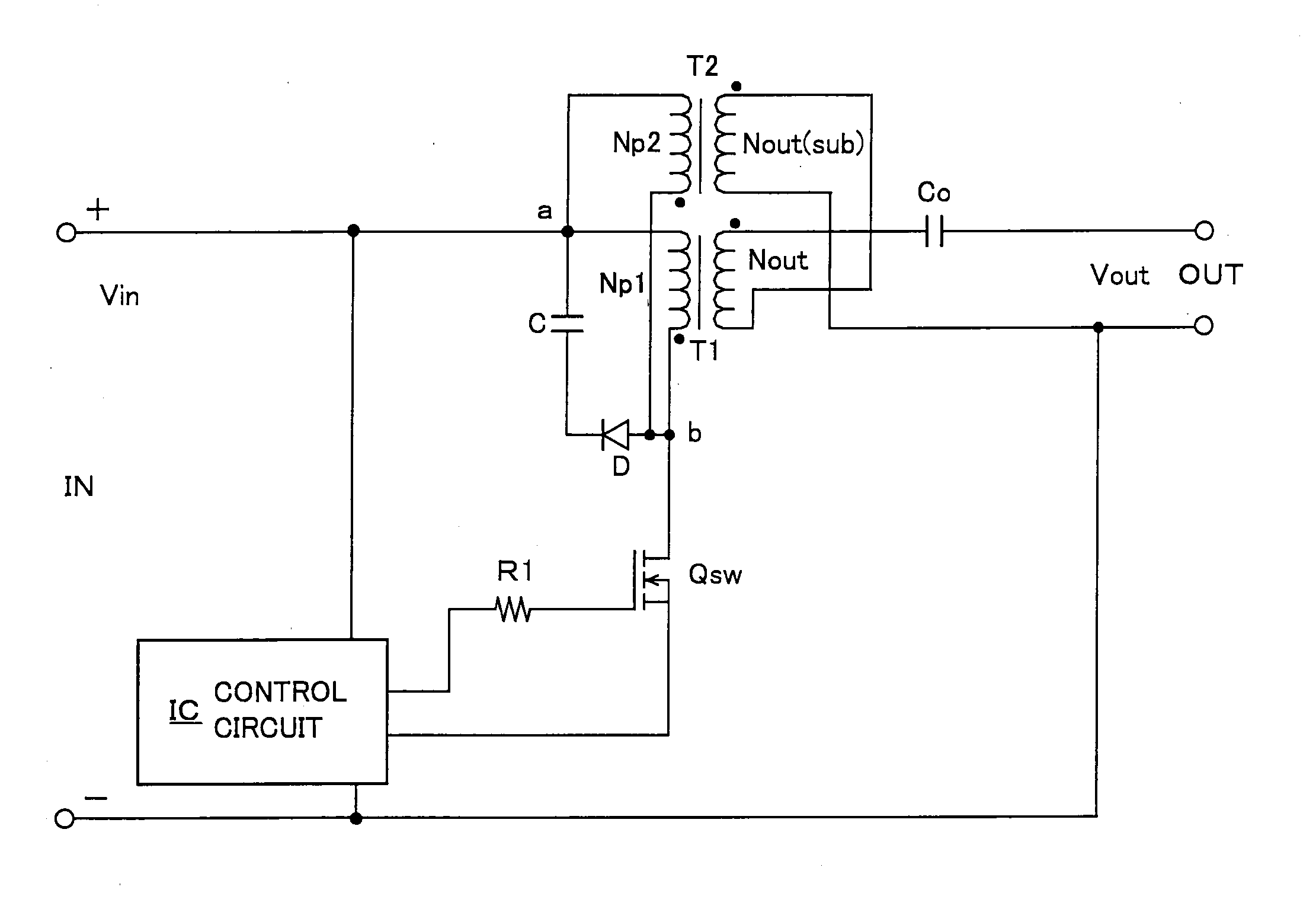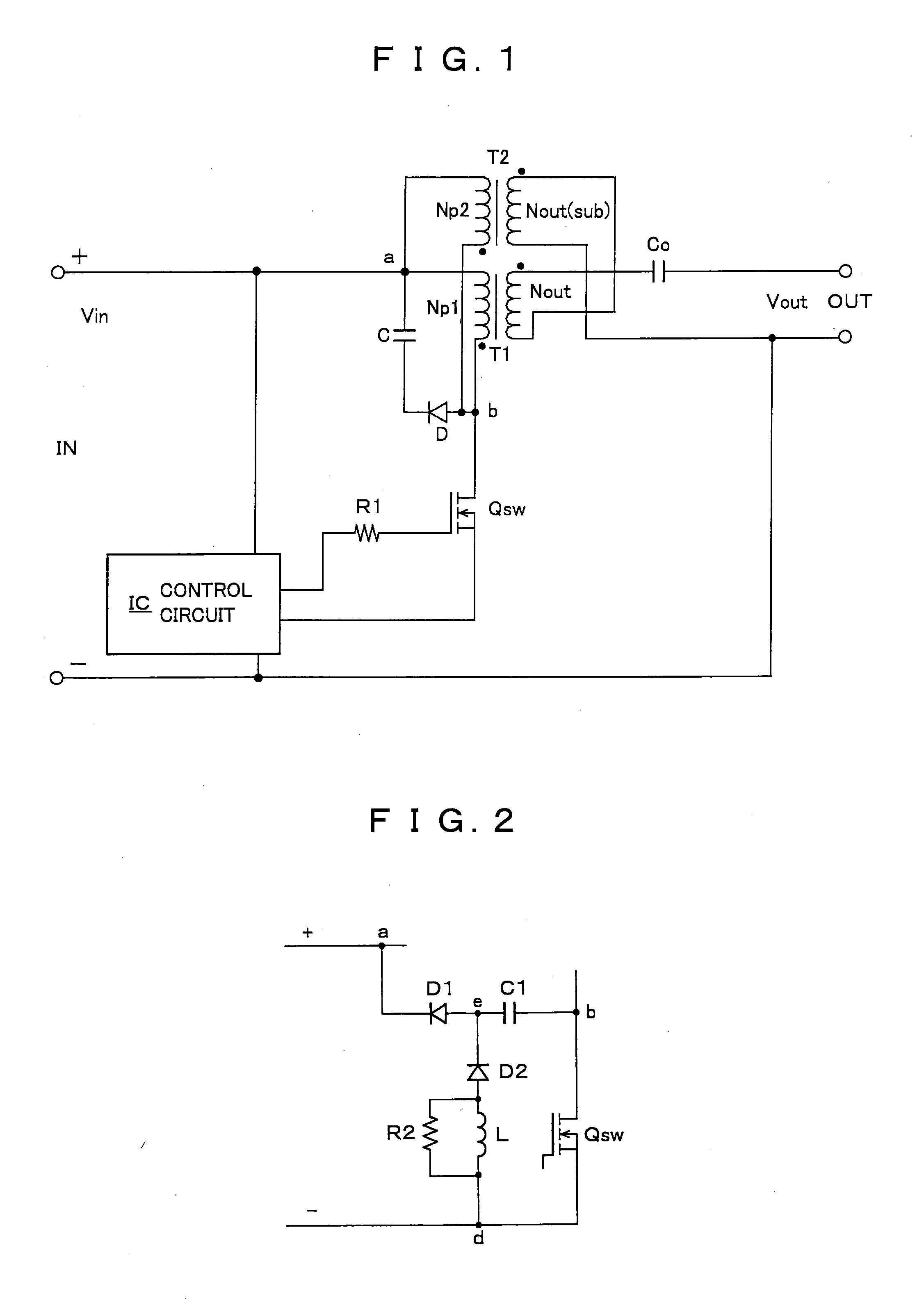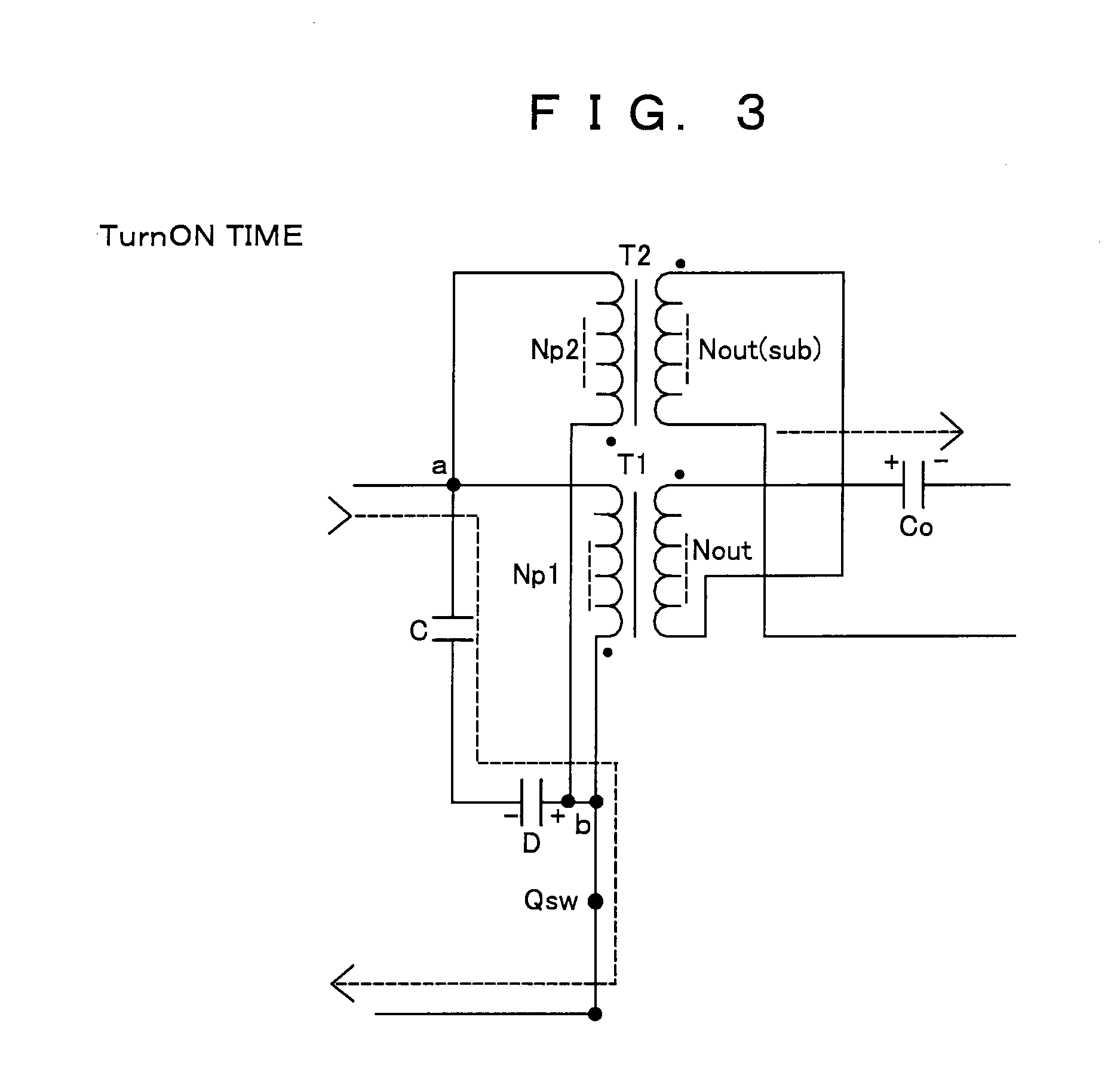High voltage inverter device
a high-voltage inverter and high-voltage technology, applied in the direction of power conversion systems, efficient power electronics conversion, climate sustainability, etc., can solve the problem that the voltage cannot be boosted any more, and achieve the effect of stable and safe operation
- Summary
- Abstract
- Description
- Claims
- Application Information
AI Technical Summary
Benefits of technology
Problems solved by technology
Method used
Image
Examples
first embodiment
[0049]A first embodiment (an example of parallel excitation and voltage addition) of a high voltage inverter device according to the invention will be described with reference to FIG. 1. FIG. 1 is a circuit diagram illustrating its configuration in which IN denotes an input terminal and OUT denotes an output terminal (this applies to the following embodiments).
[0050]This high voltage inverter device receives, as an input voltage Vin, a DC voltage (60 V or less) or a voltage within SELV (Safety Extra Low Voltage) composed of a DC component with a pulsating flow superposed thereon which is supplied through the input terminal IN, switches the input voltage Vin by a switching element Qsw to pass exciting current to excitation windings Np1, Np2 on the primary side of a first transformer T1 and a second transformer T2, and outputs high voltages from output windings Nout, Nout(sub) on the secondary side of the transformers T1, T2 to output an output voltage Vout being an AC high voltage fr...
second embodiment
[0064]Next, a second embodiment (an example of parallel excitation and current addition) of a high voltage inverter device according to the invention will be described with reference to FIG. 8. FIG. 8 is a circuit diagram illustrating its configuration.
[0065]In the second embodiment, the output windings Nout, Nout(sub) of the separate first and second transformers T1, T2 having the same characteristics are connected in parallel such that outputs thereof are subjected to current addition, and connected to the output terminal OUT side. According to this embodiment, though the output voltage is substantially the same as the case of one transformer, the output current can be doubled so that the output power can also be doubled.
[0066]That the excitation windings Np1, Np2 of the transformers T1, T2 are connected in parallel between the positive electrode of the input power supply and the positive electrode of the switching element Qsw is the same with the first embodiment. The other confi...
third embodiment
[0067]Next, a third embodiment (an example of split excitation and current addition) of a high voltage inverter device according to the invention will be described with reference to FIG. 9. FIG. 9 is a circuit diagram illustrating its configuration.
[0068]In the third embodiment, the excitation windings Np1, Np2 of the separately provided first and second transformers T1, T2 having the same characteristics are connected in series between the positive electrode of the input power supply and the positive electrode of the switching element Qsw. Between the positive electrode of the input power supply and the positive electrode of the switching element Qsw, a series circuit composed of a diode D and a capacitor C constituting a snubber circuit is also connected.
[0069]The output windings Nout, Nout(sub) of the first and second transformers T1, T2 are connected in parallel such that outputs thereof are subjected to current addition, and connected to the output terminal OUT side as in the s...
PUM
 Login to View More
Login to View More Abstract
Description
Claims
Application Information
 Login to View More
Login to View More - R&D
- Intellectual Property
- Life Sciences
- Materials
- Tech Scout
- Unparalleled Data Quality
- Higher Quality Content
- 60% Fewer Hallucinations
Browse by: Latest US Patents, China's latest patents, Technical Efficacy Thesaurus, Application Domain, Technology Topic, Popular Technical Reports.
© 2025 PatSnap. All rights reserved.Legal|Privacy policy|Modern Slavery Act Transparency Statement|Sitemap|About US| Contact US: help@patsnap.com



